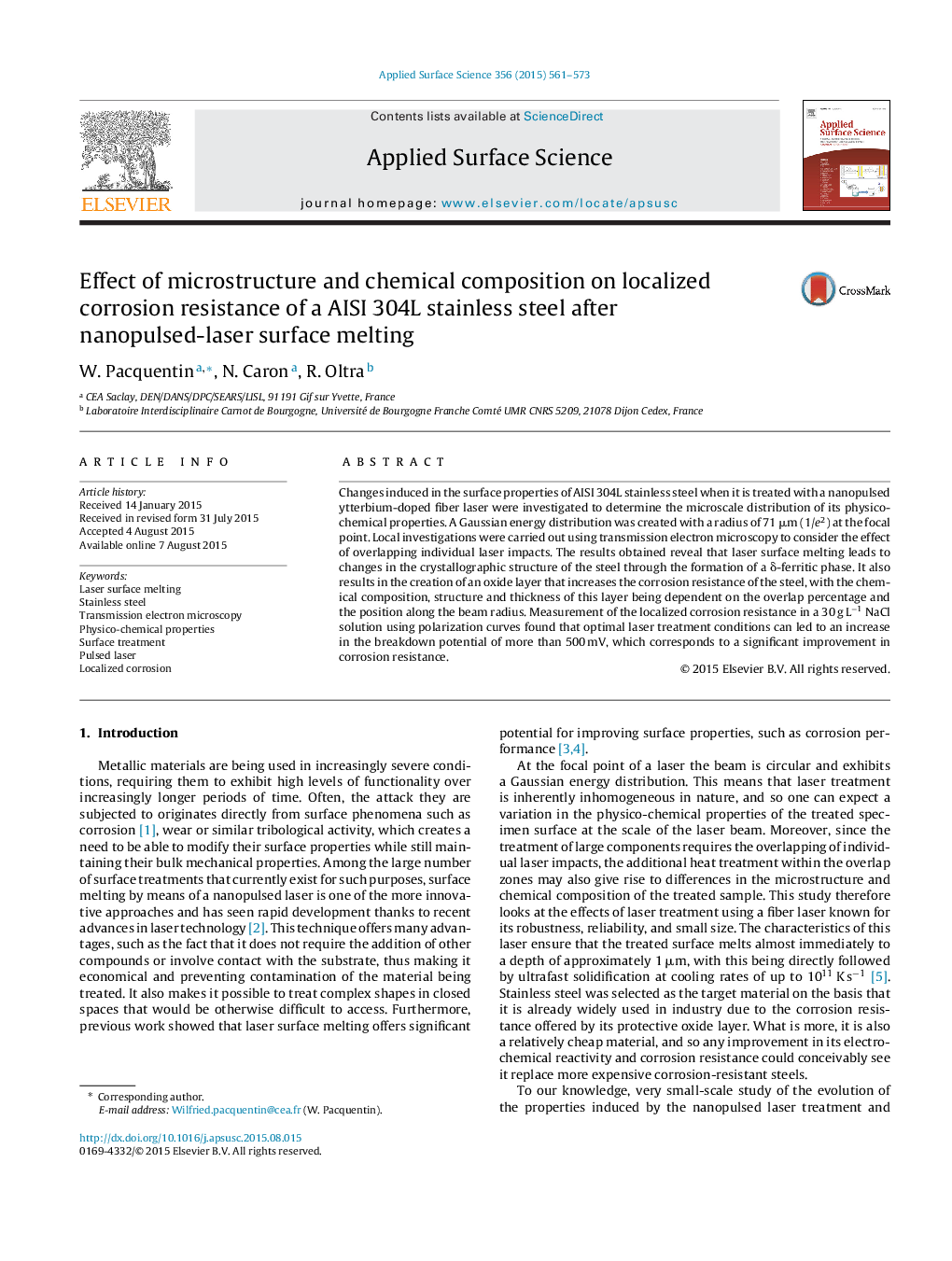| Article ID | Journal | Published Year | Pages | File Type |
|---|---|---|---|---|
| 5348959 | Applied Surface Science | 2015 | 13 Pages |
Abstract
Changes induced in the surface properties of AISI 304L stainless steel when it is treated with a nanopulsed ytterbium-doped fiber laser were investigated to determine the microscale distribution of its physico-chemical properties. A Gaussian energy distribution was created with a radius of 71 μm (1/e2) at the focal point. Local investigations were carried out using transmission electron microscopy to consider the effect of overlapping individual laser impacts. The results obtained reveal that laser surface melting leads to changes in the crystallographic structure of the steel through the formation of a δ-ferritic phase. It also results in the creation of an oxide layer that increases the corrosion resistance of the steel, with the chemical composition, structure and thickness of this layer being dependent on the overlap percentage and the position along the beam radius. Measurement of the localized corrosion resistance in a 30 g Lâ1 NaCl solution using polarization curves found that optimal laser treatment conditions can led to an increase in the breakdown potential of more than 500 mV, which corresponds to a significant improvement in corrosion resistance.
Keywords
Related Topics
Physical Sciences and Engineering
Chemistry
Physical and Theoretical Chemistry
Authors
W. Pacquentin, N. Caron, R. Oltra,
